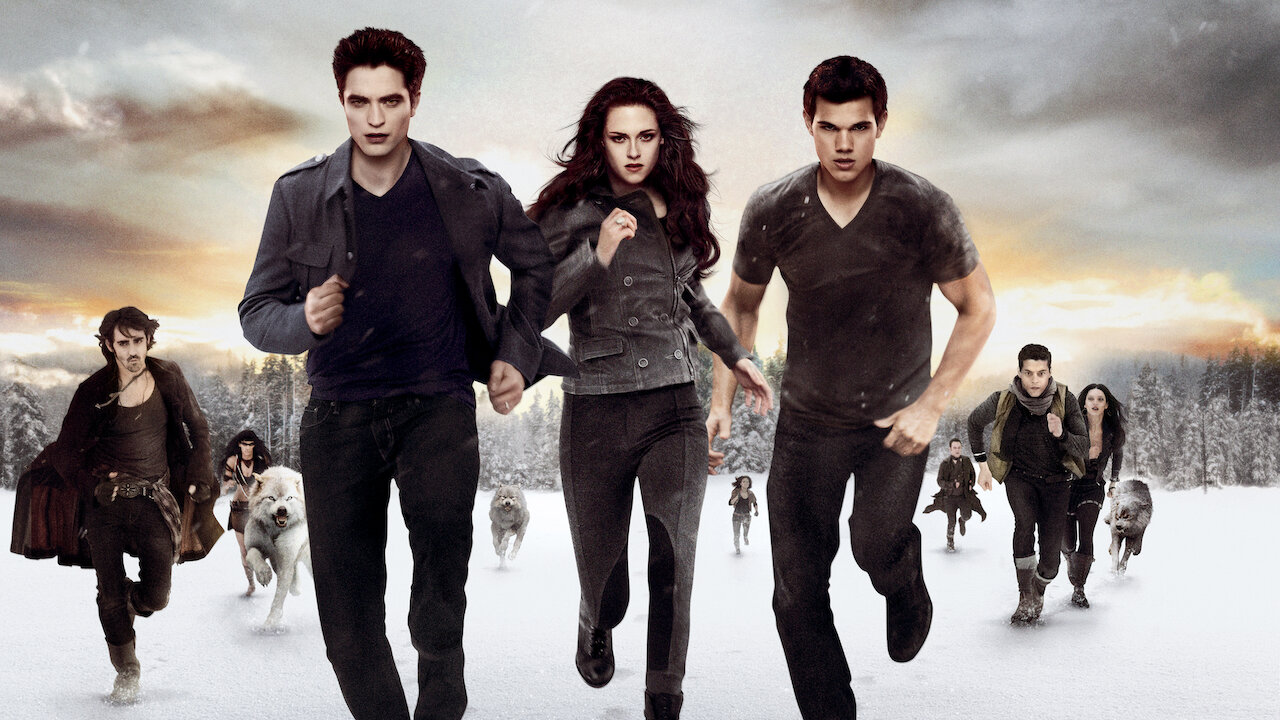Let it never be said that the Twilight film franchise doesn’t know how to make an entire movie theater gasp aloud in shock and horror. In 2012, with the release of The Twilight Saga: Breaking Dawn – Part 2, the final installment in the paranormal romance adaptation, it did just that, delivering a twist ending bloodbath that seemed to differ wildly from the book’s canonical conclusion… before immediately backtracking on the entire thing. The movie reveals that the sequence is simply a vision Alice Cullen shares with Michael Sheen’s Volturi leader Aro in order to convince him to settle their families’ vampire disagreement over Renesmee peacefully, which they do. And they all live happily ever after.
“To me, it’s like an eight minute musical number,” director Bill Condon told Vulture in 2012 of the film’s wild climax, adding that he had particular fun deciding who would be killed in the “dream” sequence. (For those keeping track at home, it was: Carlisle, Jasper, Jane Caius, Marcus, and Aro.) “When I got involved, it was just a sentence, ‘There’s a battle.’ But then it was fun to actually come up with it. That was, I would say, the biggest thing I worked on for two years.”
Condon’s delight in bringing this sequence to life translates to the screen; the director goes all in for the vampire-werewolf battle, which features some truly gifted thespians (including both Michael Sheen and Rami Malek) fighting wolves and glaring at one another intensely across the snowy tundra. The CGI-driven action is brightly lit and easy to follow. The movie gives each and every gruesome death its moment in the winter sun, letting the potential plot and character implications hit. Honestly, this entire sequence is a gift. It allows fans to see this cast and these characters battle it out in the most dramatic of ways without changing the ending of a beloved story. As a Twilight book fan who saw it in theaters, it was a hell of a good time.
It’s also not technically a deviation from the book’s plot.
“I don’t think there’s anything in there that’s not aptly suggested by the book, which is very interesting,” screen writer Melissa Rosenberg told Pop Sugar in the lead up to the movie’s release in 2012. “I mean, the book is all very much Bella’s point of view, so, for instance, when Jacob comes to Bella and says, ‘I just told your dad I was a werewolf,’ I get to actually go see that. Bella only meets their stories once they’re there, and we get to actually go with the people who are finding them, and meeting them in their environment. So it’s a lot of fun for me, and actually the final sequence at the end . . . I get to do a little bit of inventing there.”
Most of The Twilight Saga is incredibly faithful to Stephenie Meyer’s book series, which a majority of fans seemed to appreciate given the franchise’s collective box office numbers, totaling in the billions of dollars. But what works on the page doesn’t always make for the best on-screen story. Rosenberg knew that and found a way to integrate a big budget action scene into the saga’s epic conclusion without ever changing the book’s plot.
It’s an interesting albeit superficial solution to a frequent adaptation problem, and honestly one that I can’t imagine working for most franchises. But The Twilight Saga isn’t just any franchise. The blockbusters have a massive fandom driven mostly by girls and women. Most Twilight fans, of which I would consider myself one, don’t read or watch Twilight primarily for the plot. Twilight, like any self-respecting representative of the romance genre, is an emotion-driven story in which the plot acts as a vehicle to evoke various feelings in the characters and, in turn, the reader. It’s the intensity and/or complexity of that emotion that keeps fans engaged, and coming back for more. And boy, does the Breaking Dawn – Part 2 twist evoke some emotions.
Romance is also usually a genre known for happy endings, which is why the quasi-twist in Breaking Dawn – Part 2 is both so effectively shocking and would have been a bad choice should it have been “real.” The happy ending is an integral part of the promise for catharsis that the romance genre gives its readers/viewers. Romance readers have a different relationship to the angst and struggle of a story when we know it will all work out in the end. It’s no less or more valid a story structure than the horror genre, for example, which usually relies on the opposite kind of promise when it comes to its ending. But it is one that often needs defending in mainstream culture.
The Twilight Saga: Breaking Dawn – Part 2 is not a cinematic masterpiece. There’s a limitation to faithful-above-all-else film adaptations like Harry Potter or Twilight that often keeps these franchises from making the best creative choices. But I like that The Twilight Saga resisted making a change that would have alienated much of the main audience for these films, especially this late in the game. Instead, with the twist ending, fans of the book series were able to enjoy a franchise-ender that truly shocked us without losing the saga’s happy ending in the process. (Let’s just agree not to talk about the Renesmee/Jacob stuff, OK?)
The entire Twilight Saga is now available to stream on Netflix.
How do you feel about the Breaking Dawn Part 2 ending plot twist? Let us know in the comments below.
